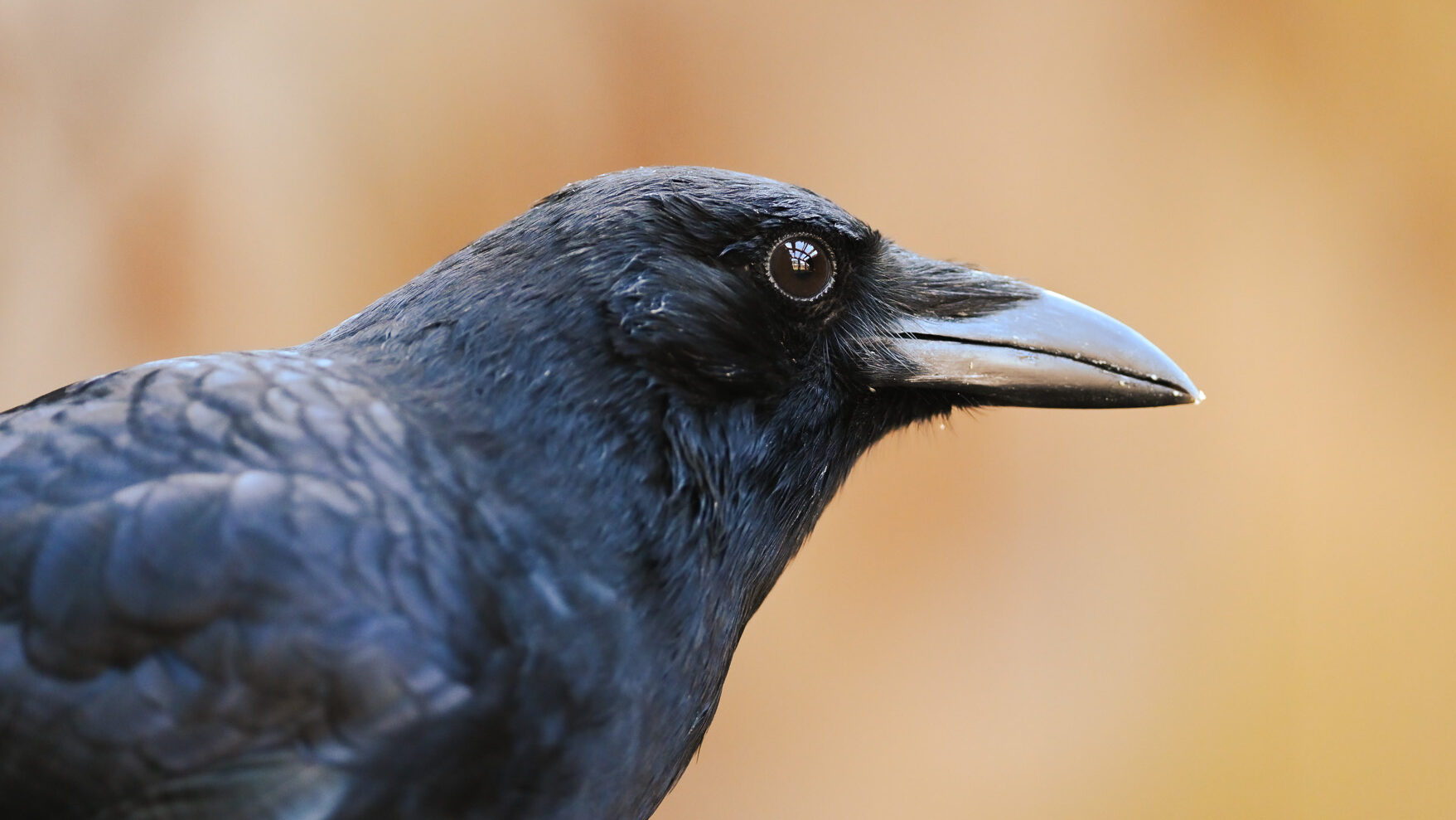
When I think of the impact an animal can have, I think of Lenny.
If you’ve visited the Klingsberg Aviary in the past few years, you have no doubt been greeted with a resounding “caw” from Lenny, our resident American Crow. But it wasn’t always that way. Shaver’s Creek has been a home for educational birds since 1981, but none like Lenny. Until his arrival, we had largely considered ourselves a “raptor center,” predominantly caring for hawks, eagles, falcons, and owls. With a re-envisioning in 2021, the Wildlife Program began searching for a corvid to add diversity and expand our educational abilities. We didn’t have to look for long because soon, our friends at River Valley Raptors heard of our search and offered to entrust to us their ambassador American Crow, Lenny. They told us he was an older bird and that he was a joy to work with. A short video call later and we were hooked. It was decided that Lenny would join us as Shaver’s Creek’s first corvid representative, and with his arrival, our “raptor center” was officially transformed into the “aviary.”
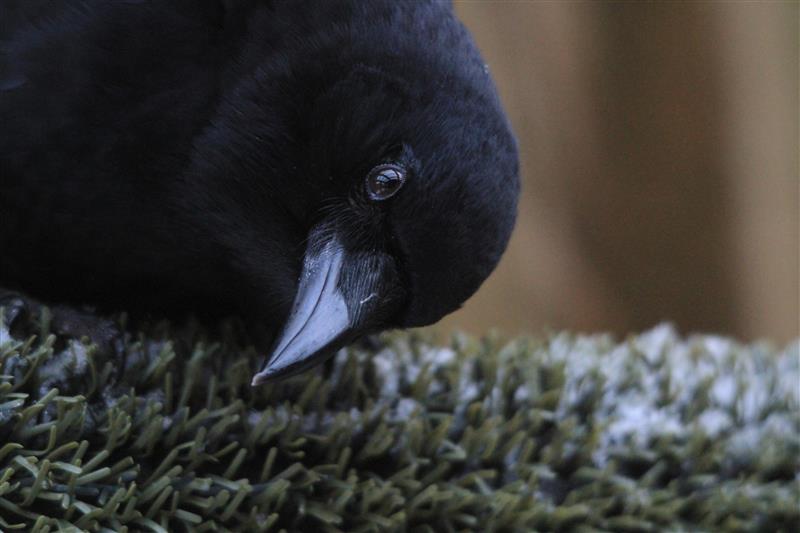
At first, some visitors seemed confused. “I see crows all the time, why not get a raven?” some curious people would ask. But the question “why not a raven?” was exactly why we needed a crow.
Human development has presented many challenges for wildlife. Not all species have done well in this new urban environment, but those who have managed to find their way are often viewed negatively. Species resourceful enough and clever enough to etch out a living in these dynamic spaces are often observed but not seen, acknowledged but not appreciated. This was Lenny’s mission: to help people find beauty and value in urban wildlife, to advocate for sustainable co-existence and sharing of space, to teach people that there is still room for wildlife. Too often, we equate how rare or uncommon something is with value. Plants we find scattered through our yards for free are “weeds” while the plants we seek out and purchase are “flowers.” The crows we can see from our homes here in Pennsylvania are often overlooked for the uncommon sighting of a Common Raven. As Rosalie Edge once famously said, “the time to protect a species is while it is still common.” But how? How do you help people see these black birds as the unique, intelligent, iridescent beauty that they are?
You introduce them to Lenny: a piano-playing, plastic-can-recycling, connect-four-winning, puzzle-solving little showman who visitors couldn’t help but fall for.
Soon questions shifted from “why a crow?” to “does he actually play that little piano in there?” Lenny quickly became a fan favorite. Any regular visitors knew you had to say hi to Lenny as you entered the aviary, and those who were unfamiliar with this custom were often met with the sweetest “wooooo!” sound to encourage them to come say hello.
Lenny’s desire to interact with our visitors made him a reliable ace in our programs. He was our most featured bird in our weekend programs and arguably our most reliable. We always knew that we could count on Lenny. His desire to learn new things also made for some fun program opportunities. When we were approached to help make a promotional video for a school program we were hosting, we quickly taught Lenny to deliver an invitation to a trainer. He did such a good job that the children who were shown this video were adamant that their teacher had fooled them with a “fake crow,” only to be amazed and captivated when Lenny performed the same behavior for them during their visit.
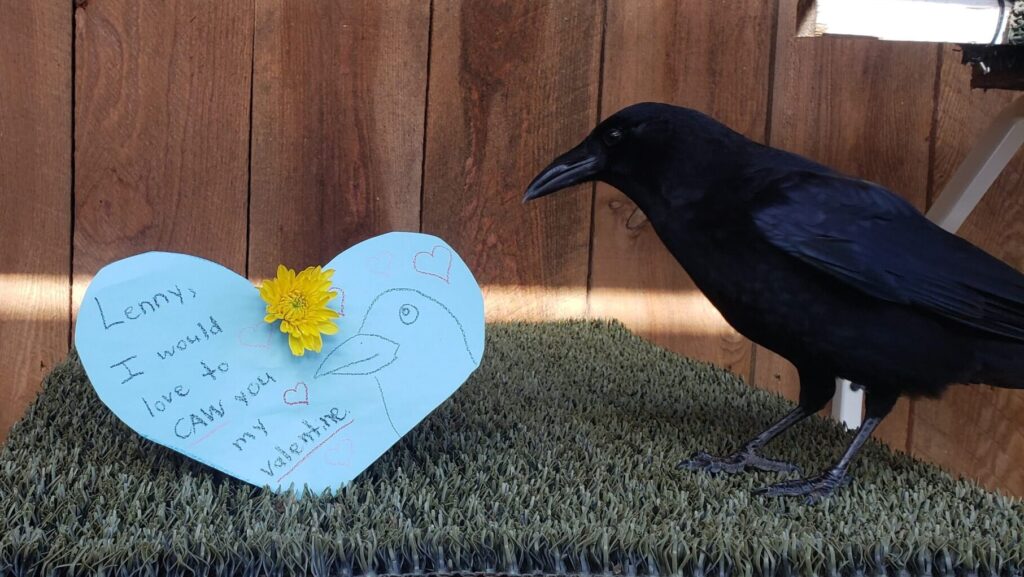
In the poem Dust of Snow, Robert Frost wrote that the antics of a crow had “given [his] heart / a change of mood / and saved [him] from / a day [he] had rued.” He wasn’t alone in this feeling. From poems written of Lenny by school children, to donations addressed to “Lenny and his friends,” to everyday visitors who came just to see him, I know countless people had their hearts changed and their days made that much brighter thanks to Lenny.
Today, our aviary is quieter. Lenny passed away of natural causes earlier this spring. He leaves behind a legacy of change: change of purpose, change of mind, change of heart. It is not an exaggeration to say that because of Lenny, birds like Jane, our Sandhill Crane, joined our team. It is because of him that the wildlife staff has been able to reach new heights. It is because of him that some people smile when they see a crow in their yard. And for that, we are incredibly grateful.
Letters to Lenny
Lenny’s impact reached far and wide. To recognize the connections he built within our community, we’re inviting you to share handwritten letters and drawings with Shaver’s Creek. These messages will be posted in our Silvi Classroom as an interactive memorial to honor Lenny’s community impact. On-site visitors will also have the opportunity to add their own contributions to the memorial.
We invite messages, memories, reflections, and artwork from all ages. Please send your letters to the following address to contribute to our collective memorial:
Lenny the Crow
3400 Discovery Road
Petersburg, PA 16669-2114
While we encourage handwritten letters, you may also email contributions to talon@psu.edu.
Supporting Lenny’s Legacy
Become an Honorary Animal Caretaker
One way to support Lenny’s long legacy at Shaver’s Creek is by becoming an Honorary Animal Caretaker. Donations through this program support our Wildlife Team in providing the highest quality of care to our resident animals. By choosing to sponsor Lenny in memoriam, you’ll ensure that his impact lives on in the Klingsberg Aviary.
Support Local Wildlife
In addition to becoming an Honorary Animal Caretaker, we encourage you to explore new ways to support local wildlife in your home and community. Some impactful actions that you might consider include:
- Let wildlife be wild. While some young animals might appear to be abandoned, many wildlife parents will leave their young alone and hidden to avoid attracting predators, only coming back to nurse or feed them a few times a day. Some parents remain nearby with a watchful eye.
- Plant native plants. Planting native trees, shrubs, and flowers provides both food and cover for many wildlife species. Native plants benefit birds, bats, bees, butterflies, beetles, and small mammals, which play an important role in sustaining healthy ecosystems. Non-native or invasive plants can have harmful ecological impacts because they outcompete native plant species and do not provide nearly as many benefits to wildlife.
- Install a nestbox. Placing a nest box on your property can provide safe nesting areas for many species of birds and small mammals to raise their young. Properly managed nest boxes can be critically important to cavity-nesting species like bluebirds and purple martins.
- Create habitat for wildlife. Learn how leaf and brush piles can be used as additional habitat for native species.
- Secure food, waste, and recycling. Attract birds not bears.
- Slow the mow. Wait until after nesting season to begin mowing fallow fields and large yards to benefit a variety of grassland-nesting bird species and support pollinators like bees, moths, and bats. Being a lazy lawnmower and only cutting grass every 2–3 weeks can also lead to more lawn flowers that attract a diversity of pollinators to boost wildlife habitat.

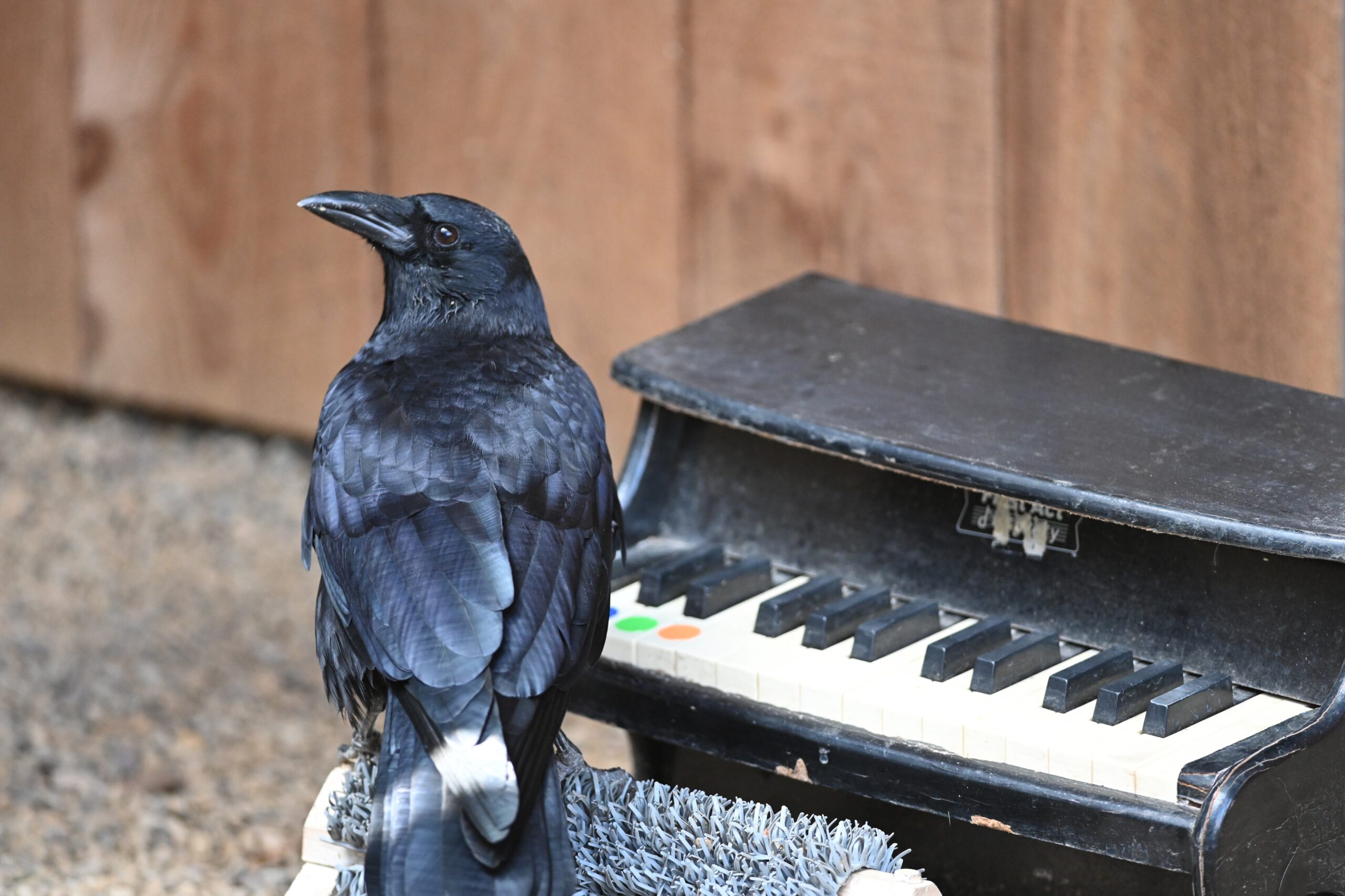
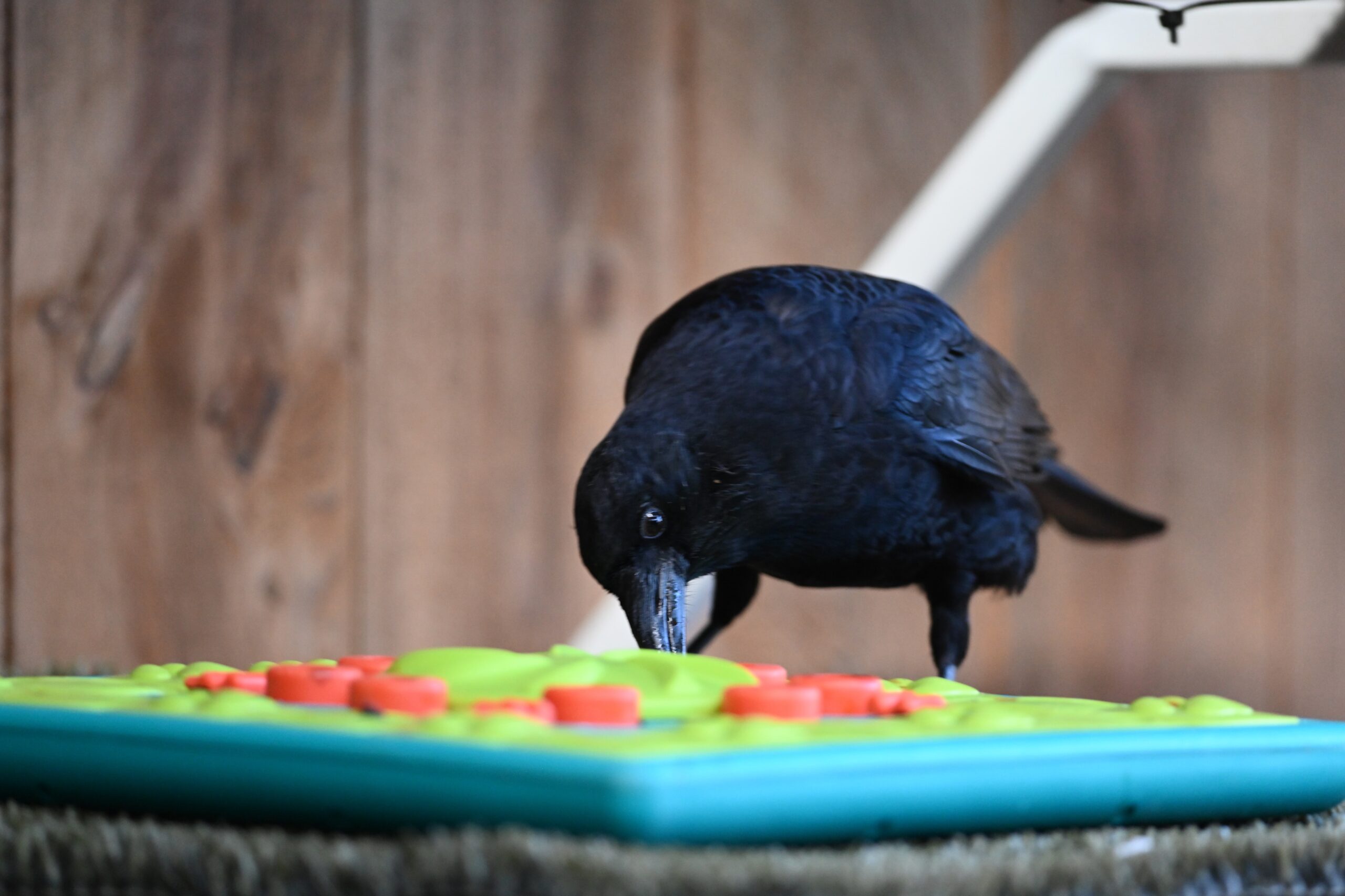
Thank you for everything, Lenny <3